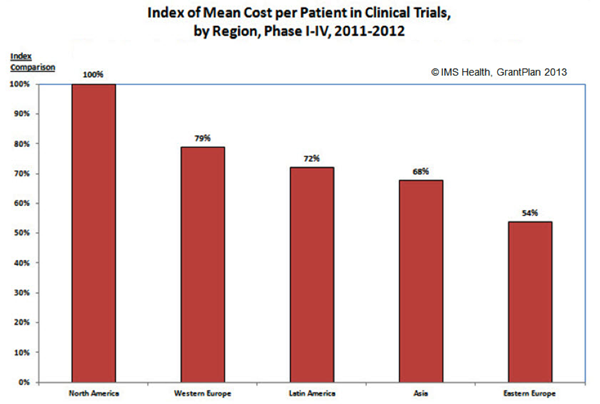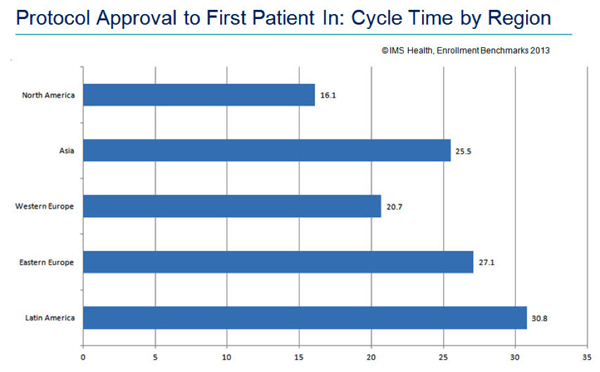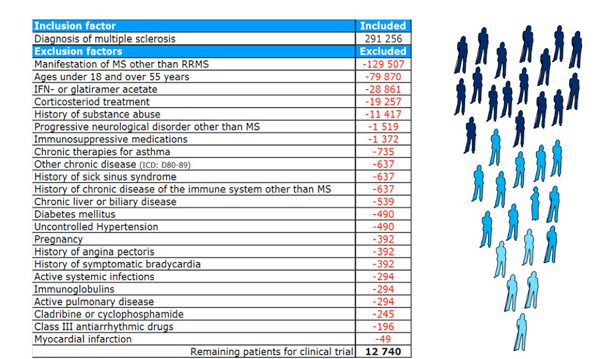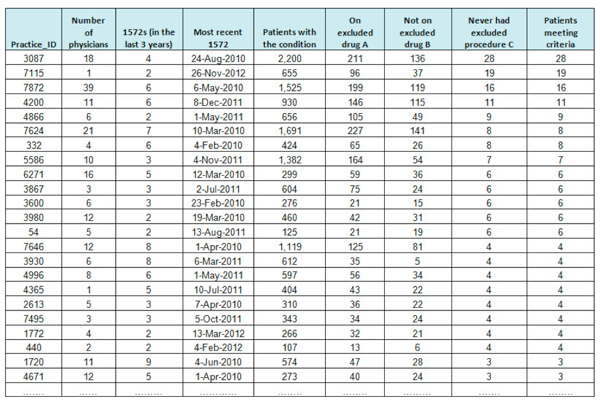Cracking the Code on Study Start-Up
No matter how long you?ve been in the clinical trials business, the mantra is always the same: not enough investigators, not enough patients, enrollment falling behind, need for rescue sites, study budget overspend.
Related Article High Performing Study Start-Up
No matter how long you’ve been in the clinical trials business, the mantra is always the same: not enough investigators, not enough patients, enrollment falling behind, need for rescue sites, study budget overspend. The important questions to ask are, “have we learned anything over the years?” and more importantly, “is the situation getting better?”
The last decade has seen a movement towards low(er) cost countries when searching for investigators – with budgetary constraints being just one of the drivers. There has been a feeling that the North American and Western European investigator pools have been plumbed to their natural limit, and that if we want enthused sites with abundant treatment-naïve patients, we need to look to Eastern Europe and Latin America. The Asia-Pacific is also an important growth area: not just for pharmacokinetic/pharmacogenomic reasons, but because that is a major market growth area for the 21st century.
Sound familiar so far?
We are now seeing the pendulum swing back. Three key factors are involved.
Firstly: speed vs. cost. The IMS Health GrantPlan cost benchmarking database – with tens of thousands of recent final negotiated budgets – makes the economics clear:

Eastern Europe is just about HALF the cost, on an average cost-per-patient measure, of North American sites. Latin America is 30 percent less expensive than North America and likewise, Asia (although that regional grouping covers a wide spectrum of costs, as you can imagine).
Yet research by the Tufts Center for the Study of Drug Development(1) pours cold water on the strategy of chasing low-cost countries. In Latin America, the time from Pre-Study Visit to First Patient In was more than twice as long as that of North America. On average, the cycle time for studies in North America was 7.4 months, while studies in Latin America had a cycle time of just over 16 months. Eastern Europe wasn’t terribly better, at a startup time of 14.7 months.
Analysis of trial metrics from IMS Health StudyOptimizer supports this finding. We have found – again, from wide industry data – that a slightly different measure of startup time exhibited the same behavior: if North America takes 16 months between protocol approval and First Patient In, Eastern Europe takes a full 11 months longer and Latin America 14 months longer – again, close to twice as long!

There is, therefore, a rather depressing inverse correlation between the least expensive regions and their ease of start-up.
The second trend to consider is the entirely welcome Clinical Trials Transformation Initiative and its recommendations on risk-based monitoring, backed by the FDA. Instead of an obsessive approach of 100% source data verification, companies can now move to intelligent assessments of which sites and which patients warrant more detailed monitoring. A pervasive use of EDC and other eClinical tools has been a key driver here. Yet the need for better virtual site monitoring demands a high level of technological excellence at investigative sites ….again, this might reinforce a tendency for study managers to use emerging countries less often than previously.
As a corollary to this trend, there are tools such as IMS Health SiteOptimizer which can be used to winnow out sites used previously that did not perform well – in terms of startup speed, enrollment targets compared with their peers, or data entry speed and quality.
Thirdly, and probably most critical: one of the main issues of study success is the protocol itself. There has been much discussion recently on the increasing level of protocol complexity – more and more procedures carried out, of ever-increasing intricacy. Yet before that step, the most urgent assessment must be in the feasibility of the protocol - an examination of the inclusion/exclusion criteria and a more quantitative analysis of the likelihood of finding study patients. In other words: Do such patients even exist? And if so, where?
The industry now has unparalleled data accessibility that allows us to answer these questions.
For example, using IMS Health German EMR data, an ‘attrition funnel’ can be created, weighing the actual impact that each of the inclusion and exclusion criteria has for a multiple sclerosis study:

We can take it a logical step further. Depending on the richness of the medical data source, and the country, an analysis of individual anonymized patient records can often allow the pinpointing of which individual physicians have the patients you are looking for.

In conclusion, then, a more data-driven approach for both protocol feasibility and site selection will pay ample dividends. The best countries might not be the most obvious ones; sites you have used before need careful examination as to their tech savviness and their prior performance; and it is always worth pressure-testing the protocol’s inclusion/exclusion criteria to confirm that patients can actually be found, and where….. all of which should be weighed against, and potentially traded off with, the time and cost for startup and the access to low(er) cost markets.
Linda Drumright, General Manager, Clinical Trials Optimization Solutions, IMS Health, and John Humphreys, Senior Product Manager, Clinical Trials Optimization Solutions, IMS Health
(1) Benchmarking the Study Initiation Process, Therapeutic Innovation & Regulatory Science (2013) 47: 101; Lamberti, Brothers, Manak and Getz, http://dij.sagepub.com/content/47/1/101